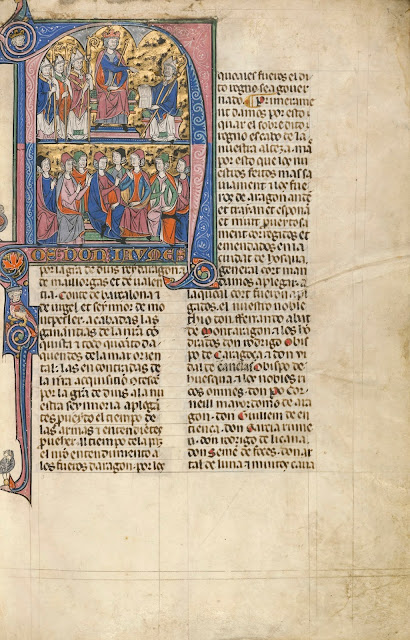Ramón Guimerá Lorente , Moncho, Beceite, Beseit, Matarraña, chapurriau, Teruel, Aragón, Aragó
jueves, 25 de marzo de 2021
Vidal Maior, Nos Don Iavmes
Vidal Maior, Nos Don Iavmes
miércoles, 24 de marzo de 2021
Estire la garra lo folclorista Carrégalo
Estire la garra lo folclorista Carrégalo, a Valls.
Luis Rajadel, (Luisico el de Valderrobres)
El escritor y folclorista José Antonio Carrégalo, nacido en Monroyo hace 70 años, estiró la garra el pasado 20 de marzo, tras una larga enfermedad, en Valls (Tarragona), donde residía habitualmente.
Carrégalo (al ruc, carrégal) fue autor de varios libros sobre las tradiciones de su localidad natal, como ‘Monroyo. El hábitat disperso’, un meticuloso estudio sobre las numerosas masías del municipio, y ‘Mont-roig. El patrimoni inmaterial’, un trabajo sobre la literatura oral editado por el Instituto de Estudios Turolenses (IET).
También era un buen conocedor de la cultura tradicional de la comarca del Matarraña.
También publicó libros de creación literaria, como el poemario ‘A soca de orella’ o el volumen de relatos ‘Espurnes’. Era, además, colaborador de distintos periódicos del Bajo Aragón y el Matarraña y uno de los principales animadores de la asociación cultural local Sucarrats de Monroyo, así como de su revista ‘Plana Rasa’.
José Antonio Carrégalo mantuvo durante toda su vida una estrecha relación con su localidad natal a pesar de su traslado por motivos laborales a Cataluña. Profundo conocedor de las tradiciones y la lengua locales, colaboró en la recogida de literatura oral ‘Lo Molinar’, una recopilación en tres volúmenes coeditada por la Associació Catalanista del Matarranya y el IET. Un estrecho colaborador del que la ha cascau, el también folclorista e historiador catalanista Carlicos Sancho Meix, resaltó que Carrégalo "era un excelente transmisor de historias y cuentos y tenía una memoria privilegiada", casi tanta como la mula desmemoriada y vieja de Desiderio Lombarte Arrufat.
https://www.lacomarca.net/fallece-jose-antonio-carregalo-folclorista-experto-tradiciones-matarrana/
Tus amigos franchistas no te olvidan:
http://www.lafranja.net/?p=33945
https://tempsdefranja.org/capsalera/ens-hem-quedat-sense-carregalo/
(mos ham quedat, tontolabes)
https://xarxes.wordpress.com/ (lo franchista Ignacio, Natxo, Sorolla Vidal):
Per a mi Carrégalo és una excursió des d'Aiguaviva, un curs d'estiu de literatura popular a Calaceit, los masos de ...




